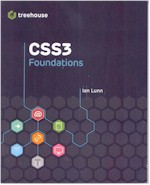 |
|
|
| ||||||
|
|
This page is the original source of this review, though you may also find it on Amazon or other sites. | ||
| Book Reviews Home | Free Audio Books | |
 |
Book Review of: CSS3 FoundationsPrice: $24.78 Availability: Usually ships within 24 hours |
| Review of
CSS3 Foundations, by Ian Lunnt (Softcover, 2013) (You can print this review in landscape mode, if you want a hardcopy) Reviewer: Mark Lamendola, author of over 6,000 articles. The review I wrote prior to this one was for a related book by a different author. The other book was HTML5 Foundations, by Matt West. The other book was easier for me to understand and follow. But I think that's because of relative exposure. I have been working with HTML since the mid-1990s and have read several books and tutorials on it. Over the past couple of years, I have dabbled a bit with CSS. I haven't read other books on it, nor worked through any CSS tutorials (because there's only so much time in each day, and dealing with Google's Panda and Penguin soak up most of it). So my perspective in comparing the two books is, for most metrics, not valid for most users. In the interests of accuracy and usefulness, I'll avoid going there in this review. As with the other book, this one is technically detailed. I didn't really grasp it on first read, partly for that reason and partly due to the factors stated earlier. So, I didn't get the same buzz I got off the other book. When I finished this, I had to ask myself whose fault that was. To answer the question, I looked at Ian's methodology. Clearly, he tried to walk the reader through actual examples and build upon the learning as he went. This is essentially the methodology that Matt used in his HTML book. The writing style was, like Matt's, clear and understandable. No "re-reads" to decipher some poorly put prose--there wasn't any such prose. My "verdict" is that Ian did an admirable job of making CSS concepts and best practices accessible to the reader. Recently, Bruce Clay commented on my use of tables rather than "proper CSS" on one of my pages. That page also makes use of CSS, but I used tables to achieve something because that was easier for me. Bruce is right (no surprise there), from a purist designer standpoint--and from the standpoint of future-proofing your site. The reality is I am often forced to choose between perfect and good enough. Interestingly, that page competes on Google with another site that is completely tables, and that violates a long list of best practices, don't do rules, conversion principles, and content development. That site holds the #1 position consistently. This informs my decisions about whether to spend 5 hours figuring out how to implement something using CSS or to use "outdated" HTML and be done in 15 minutes. This book, however, shortens that 5 hour hurdle quite a bit. Probably, I'll never work through the progressive examples. I just don't have the time to do that, due to the time demands of running a business and surviving in this Depression while Google plays its algorithm games. But I can use it to more intelligently revise my style sheets and more easily do things in CSS vs. "cheating" by slapping in some tables or other elements that will eventually have to be replaced with CSS anyhow. My real exposure to CSS began with implementation by Kevin Ford at MivaMan. I saw firsthand some of the advantages of CSS, such as improved loading speed (especially after combining and minifying several CSS files). Now after reading this book I understand more of how Kevin worked his magic. And why it matters. If you're at all involved in doing any coding on any Website, even just maintenance, this book--like the HTML 5 book-- will help you better work with your Web designer. You can avoid making mistakes that your Web designer has to clean up for you (sorry, Kevin!), and you can be more realistic about what approach to take to implementing features on the site if you're the owner of it and need to understand the scope of the work. CSS3 Foundations consists of an Introduction and 17 chapters occupying 315 pages (many blank pages are counted, so in terms of content it's less than that). It also has a detailed TOC and an in-depth index. | |
| |||||